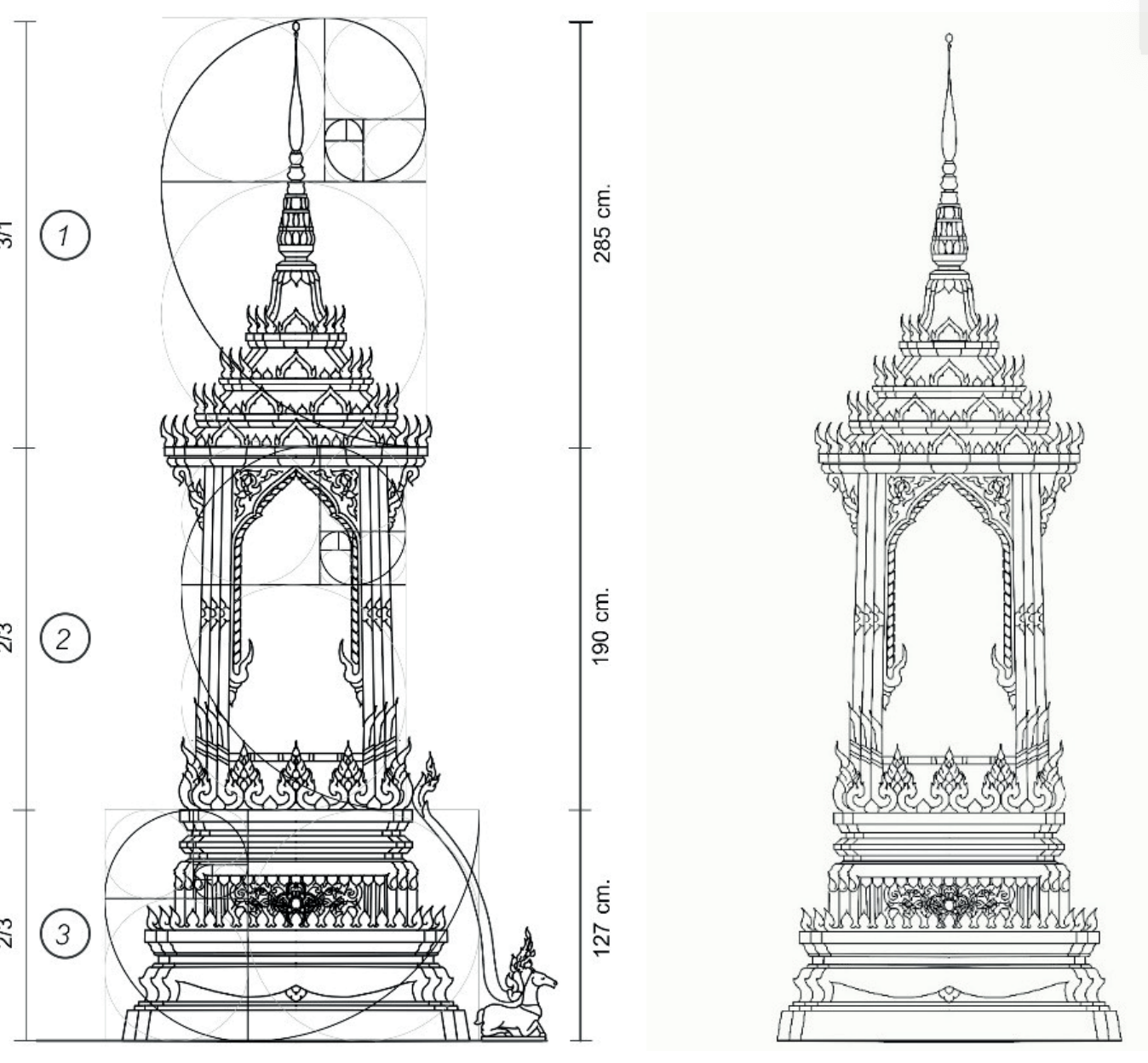Beauty proportions in Thai art, Busabok style
DOI:
https://doi.org/10.69598/decorativeartsjournal.2.116%20-%20138Keywords:
Proportions, Beauty, Busabok styleAbstract
Style Busabok Architecture is an art created as a response to the use of Buddhism, rituals, and the monarchy; that is, as a form of preaching. Therefore, creation, invention, design, and decoration produce significance and sacredness. In design and creativity, there are tenets and concepts that we comprehend. The context of Busabok art and its relation to the utilization of space are both for use in proclaiming Dharma and positioning elements in the sermon pavilion area. From a compilation of comparative studies in numerous fields, it was determined that the approach to creating aesthetics in areas that required excellent usability and reflected the beliefs of Buddhism was derived from the design principles-based guidelines. The grandeur of Thai Dhamma arts is known and acknowledged by us. However, we are unaware of the beauty's origin or purpose. Therefore, the study employed the decoding procedure as an artistic subject to demonstrate all design and creative approaches. The pulpit was used as a comparative example of a small architectural structure in the study of the traditional Thai form of Busabok art. It is believed, based on the observations in the hypothesis, that there exists a distinct system or theory for determining the ideal proportions of beauty. In the design and creation of traditional Thai Busabok-style pulpit art, it is possible to identify or compare certain geometric proportions. As a result of the study, there were discoveries in explaining the proportion of beauty in Busabok art that does not rely on the individual preferences of the artist. But it comes from designing and adjusting the proportions to find the perfect use for the intended purpose and can also be used to explain and define the use of proportion theory in Thai art as well.
References
กรมศิลปากร. (2559). มัณฑนศิลป์ไทย-อาเซียน. อมรินทร์พริ้นติ้งแอนด์พับลิชชิ่ง.
กรมศิลปากร. (2561). องค์ความรู้เรื่องรูปแบบ ลวดลายประดับ และวัสดุก่อสร้าง ของปรางค์สมัยอยุธยา พระนครศรีอยุธยา:เทียนวัฒนา.
เกรียงไกร เกิดศิริ. (2560). งานพระเมรุ: ศิลปะสถาปัตยกรรม ประวัติศาสตร์ และวัฒนธรรมเกี่ยวเนื่อง. มติชน.
ฉวีงาม มาเจริญ. (2520). บุษบกธรรมาสน์. การศาสนา.
โชติ กัลยาณมิตร. (2539). สถาปัตยกรรมไทยเดิม. มหาวิทยาลัยธรรมศาสตร์.
ปฏิพัทธ์ ดาระดาษ. (2538). ลายไทย ภาพไทย ๑. งานดี.
พระพรหมพิจิตร. (2495). พุทธศิลป์สถาปัตยกรรมภาคต้น. กรมศิลปากร.
สมคิด จิระทัศนกุล. (2546). คติ สัญลักษณ์ และความหมาย ของซุ้มประตู-หน้าต่างไทย. อมรินทร์พริ้นติ้งแอนด์พัชลิชชิ่ง.
ปิยลดา เทวกุล ทวีปรังสีพร, หม่อมหลวง. (2557). คำ ความคิด สถาปัตยกรรม ว่าด้วยทฤษฎีสถาปัตยกรรมในโลกโพสต์โมเดิร์น.ลายเซ็น.

Downloads
Published
How to Cite
Issue
Section
Categories
License
Copyright (c) 2023 DEC Journal

This work is licensed under a Creative Commons Attribution-NonCommercial-NoDerivatives 4.0 International License.
Published by Academic Affairs Division, Faculty of Decorative Arts, Silpakorn University. The copyright of the article belongs to the article owner. Published articles represent the views of the authors. The editorial board does not necessarily agree with and is not responsible for the content of such articles.


